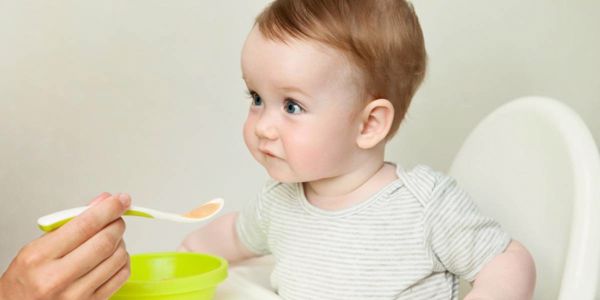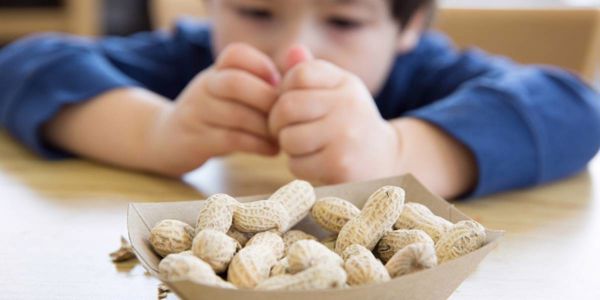My daughter, now 1 years old, has CMPA and, whilst our diagnosis journey was fairly straightforward compared to some, I thought it might be useful to explore a little more about CMPA (Cow's milk protein allergy) and talk about our story.
What Is CMPA?
Firstly, let's have a quick look at what exactly CMPA is for those who aren't familiar with the term. CMPA is one of the most common childhood food allergies, estimated to affect around 7% of babies under 1. CMPA is an allergy to cow's milk that will manifest as in one of the two below ways:
- Immediate CMPA - symptoms begin within minutes of ingesting cow's milk
- Delayed CMPA - symptoms begin several hours, sometimes days, after having cow's milk.
What are the Symptoms of CMPA?
CMPA has a very wide range of symptoms, which is one of the reasons why diagnosis can sometimes be quite difficult. Some of the possible symptoms your baby might show are:
- Digestive problems such as vomiting and reflux, discomfort and stomach ache, diarrhoea or constipation
- Skin problems such as eczema, red itchy rashes, swollen lips, face and eyes
- Hay-fever like symptoms such as a runny nose or blocked nose.
Very occasionally, CMPA can cause a more severe allergic reaction that might come on suddenly and be more serious - if you notice your child struggling with any symptoms resembling anaphylaxis such as swelling in the mouth or throat, shortness of breath, wheezing and difficulty breathing then call 999 or go to A&E immediately. Try not to worry about this happening - it isn't common - but it is something to be aware of.
If you notice any of the above CMPA symptoms then you should book an appointment with your GP to discuss and investigate the symptoms further - they could be a sign of CMPA or potentially another condition you have not yet considered.
Whilst not technically a symptom of CMPA, it's also important to note that many babies with CMPA will have a drop in weight before diagnosis - this could be due to vomiting, or maybe they might not enjoy their milk as they know it is causing them discomfort and so might not want to drink. My daughter dropped two centiles, which caused panic with our GP and triggered a referral to the hospital paediatrician, and we also sought help privately so she could be seen quicker. Any drop in weight, especially when they are very young, should be explored and acted upon quickly, so if your baby drops weight - put your foot down and demand your baby be seen in person and this weight drop explored.
How is CMPA Diagnosed?
CMPA is diagnosed by eliminating cow's milk from the baby's diet and observing their symptoms to see if they disappear. If they disappear, we can presume that it is the milk that was causing the symptoms, however if the symptoms remain present then we know that it must be something else causing the symptoms. CMPA can be crossed off the list and further investigations begin to discover what's truly to blame.
Your GP or medical practitioner will guide you through the steps of eliminating cow's milk, but generally speaking, if you're breastfeeding you will need to eliminate cow's milk from your own diet so that the cow's milk does not get passed onto your baby through your breast milk. It may take a little longer for you to notice your baby's symptoms clearing up, as the cow's milk might remain in your body for a little while after you've stopped ingesting it. Don't panic - just stick with the elimination diet and give it a few weeks - make sure you book in another GP appointment to discuss whether you've noticed any change in your baby's symptoms and you can take it from there.
If you're formula feeding, you'll start trialling different formulas to find the best one for your baby. Many GPs will start you off on extensively hydrolysed formula, such as Aptamil Pepti 1, however this does still contain milk - the proteins have been broken down (hydrolysed) to make them less likely to cause an allergic reaction. For some babies with a very mild allergy, this formula might work for them, but for other babies, they'll need an amino-acid based hypollergenic formula with absolutely zero traces of cow's milk. We gave it about 10 days before we knew that the extensively hydrolysed formula wasn't making a difference to my daughter's symptoms, and so we called our GP back and requested the amino-acid based hypoallergenic formula.
Your Baby Club and Center Parcs are giving you a chance to win a family break in a Woodland Lodge at a UK Center Parcs village of your choice.
Some GPs are reluctant to prescribe amino-acid based hypoallergenic formula because of how expensive it is for the NHS. Whilst that's a whole other issue within itself, don't be scared to put your foot down and demand a prescription for one of these formulas if you think your baby needs one - you can always ask for just 2-3 week's worth to see how they get on before you get a repeat prescription. Be prepared to fight for this and stand your ground - whilst we had no trouble obtaining this prescription as my GP agreed with me immediately, I've heard many a story where some parents have had to really fight and plead their case.
If symptoms do disappear once cow's milk has been eliminated, to verify the CMPA diagnosis, some doctors will then ask you to re-introduce milk back into their diet - if the symptoms return again then the CMPA diagnosis can be truly confirmed. This isn't always the case, though - my paediatrician actually said he was happy enough with the disappearance of my daughter's symptoms to formally diagnose her with CMPA without putting her through the trauma of re-introducing the milk.
Lactose Intolerance vs CMPA
Lactose intolerance and CMPA, whilst similar, are actually very different. When telling family members about my daughter's CMPA diagnosis, most of the responses were 'oh so she's lactose intolerant' - I had to explain that these are completely separate things more times than I can count!
Where CMPA is an allergic reaction involving the immune system to the protein in cow's milk, lactose intolerance is the inability to fully digest lactose - the sugar found in milk. Instead of being digested and absorbed, the lactose remains in your gut and causes digestive problems.
Lactose intolerance will manifest in your baby's digestive system, with symptoms such as gas, bloating, discomfort and stomach ache, diarrhoea and nausea. Whilst these digestive system issues do overlap with CMPA (and hence sometimes cause confusion during diagnosis), lactose intolerance does not involve the immune system and will not show symptoms such as skin rashes, eczema, wheezing, runny noses - these are all symptoms of CMPA.
During our diagnosis journey, the first milk the GP asked us to try was lactose-free milk that you can buy yourself in a supermarket. We followed their advice, but in my gut I knew that my daughter had CMPA as opposed to lactose intolerance - her skin issues were her most severe symptom, and yet skin issues aren't a symptom of lactose intolerance. I did some more research and got my facts in place, and within 2 days, I was back on the phone to the GP stating my argument and requesting to move on to the next step - formula's made specifically for CMPA.
My Baby has Been Diagnosed with CMPA. What's Next?
When you receive a CMPA diagnosis, you'll now know for sure that they cannot tolerate any milk, and need to ensure that they are not having any cow's milk whatsoever, whether that's sticking to a milk-free diet yourself and breastfeeding or using a cow's milk free formula as discussed above. You will probably be referred to a dietician for guidance during weaning, and will be asked to try the milk ladder to gently re-introduce milk as they get older. The good news, is that many children do complete the milk ladder and completely grow out of their allergy.
If you're going through the CMPA diagnosis and want to chat to someone who has been there and done that, my Instagram DMs are always open! You can my details in my profile below.








